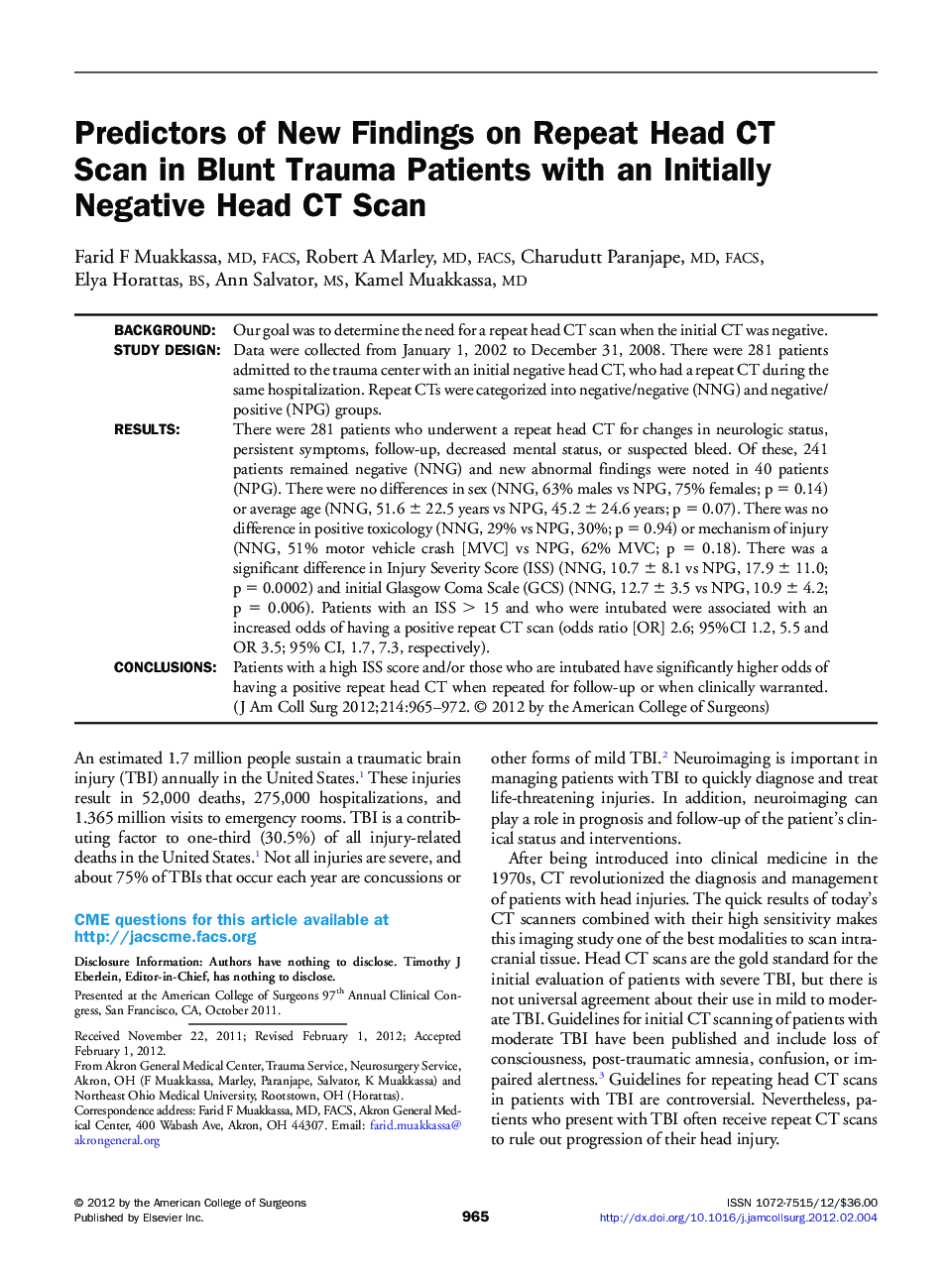| Article ID | Journal | Published Year | Pages | File Type |
|---|---|---|---|---|
| 4293317 | Journal of the American College of Surgeons | 2012 | 8 Pages |
BackgroundOur goal was to determine the need for a repeat head CT scan when the initial CT was negative.Study DesignData were collected from January 1, 2002 to December 31, 2008. There were 281 patients admitted to the trauma center with an initial negative head CT, who had a repeat CT during the same hospitalization. Repeat CTs were categorized into negative/negative (NNG) and negative/positive (NPG) groups.ResultsThere were 281 patients who underwent a repeat head CT for changes in neurologic status, persistent symptoms, follow-up, decreased mental status, or suspected bleed. Of these, 241 patients remained negative (NNG) and new abnormal findings were noted in 40 patients (NPG). There were no differences in sex (NNG, 63% males vs NPG, 75% females; p = 0.14) or average age (NNG, 51.6 ± 22.5 years vs NPG, 45.2 ± 24.6 years; p = 0.07). There was no difference in positive toxicology (NNG, 29% vs NPG, 30%; p = 0.94) or mechanism of injury (NNG, 51% motor vehicle crash [MVC] vs NPG, 62% MVC; p = 0.18). There was a significant difference in Injury Severity Score (ISS) (NNG, 10.7 ± 8.1 vs NPG, 17.9 ± 11.0; p = 0.0002) and initial Glasgow Coma Scale (GCS) (NNG, 12.7 ± 3.5 vs NPG, 10.9 ± 4.2; p = 0.006). Patients with an ISS > 15 and who were intubated were associated with an increased odds of having a positive repeat CT scan (odds ratio [OR] 2.6; 95%CI 1.2, 5.5 and OR 3.5; 95% CI, 1.7, 7.3, respectively).ConclusionsPatients with a high ISS score and/or those who are intubated have significantly higher odds of having a positive repeat head CT when repeated for follow-up or when clinically warranted.
